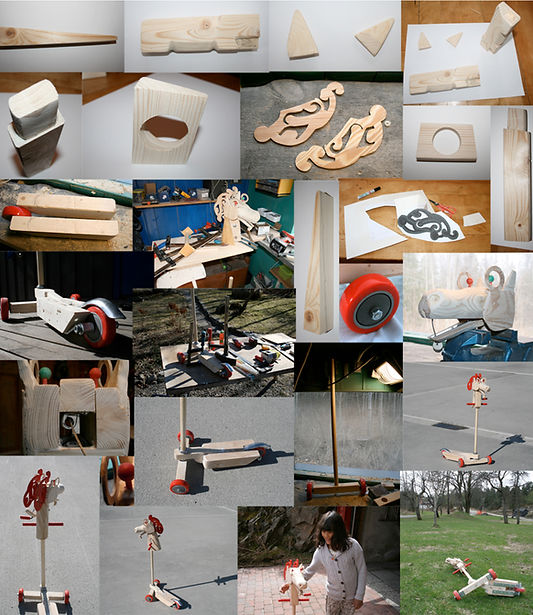
Reading tables and documentation environment for The Right to the City, IKM Gallery, Oslo Museum 2013

BED FOR TWO CATS This consists of two compartments, one has a ladder for the older cat that will be easy to climb. The frame is wrapped with a rope at the same time acts as a toy, the end of the rope is hanging for play. This is also a decorative element in a simple wooden structure. The materials come from a structure of an old IKEA bed, ceramics, textiles wood debris, screws and a few feet of rope are some of the materials used. Each bed has a comfortable cushion that can be reemoved for to cleaning. It is also easy cleaning under the bed In one corner there is a small mosaic of stone that cats can sharpen their claws against.

TENNIS BALL. This garden sculpture is made with a round, welded iron structure inside. It was filled with compost and garden waste and covered with a net and sacking. On this mount I finished turf that made contact with the compost below. "Seam" in the tennis ball is a lysslynge that glows in the dark. The sculpture lasts for about two years before the compost has been ground and collapses.
THE DRAGON. The target group for this toy is children 5-6 years of age. These kids are becoming more independent of the home but are still quite young children. They can master a lot, but suddenly become childish and small again. The game is a fantasy, perhaps a kind of dragon. The toy has various distinct features the child can use in their own way to stimulate curiousity and fantasy. It is movable, so your child can use it to get some momentum, it has sound that the child can control and use whenever he or she wants. The head is like a sounding board, his mouth opens and closes, it makes a noise and the neck sits a metallrangle, a "matraca" on a crank. The rear wheels have brakes.


Exhibition design.

In KUNST- OG DESIGNHALL HIOA, I constructed an exhibition design to allow for changing displays in a building that is protected for cultural reasons, this means we can not use screws in the walls or alter the architecture in ways that can not be changed back to the original. By using a principle of suspension, I mounted a system of walls and partitions that can be used in flexible ways and will not leave any trace in the original architecture.See website.


